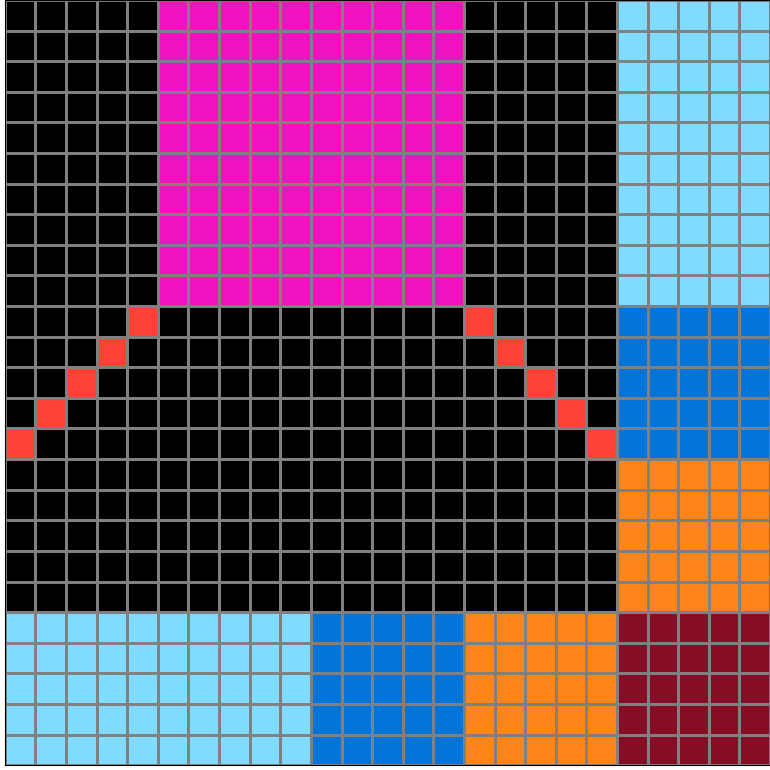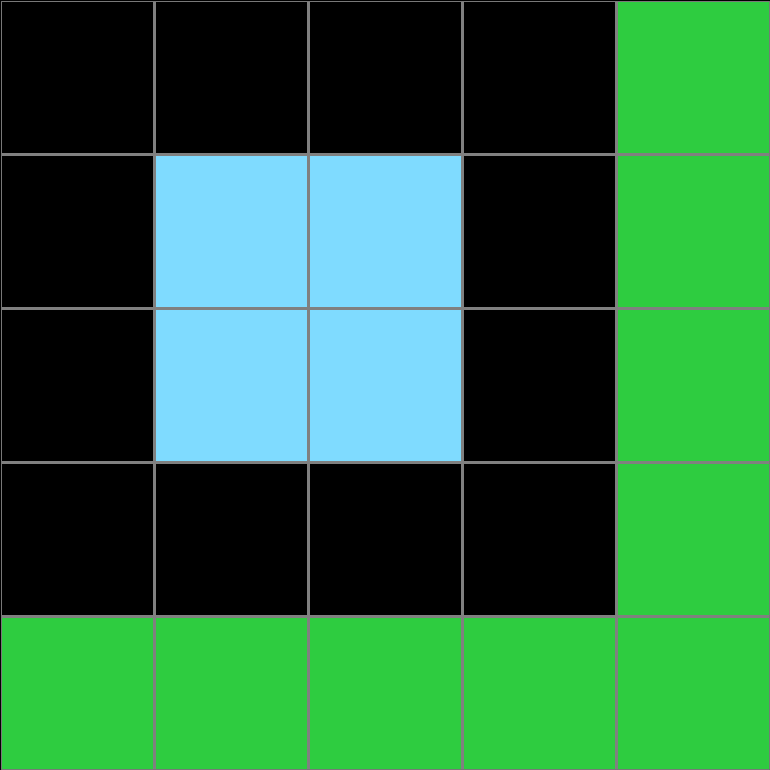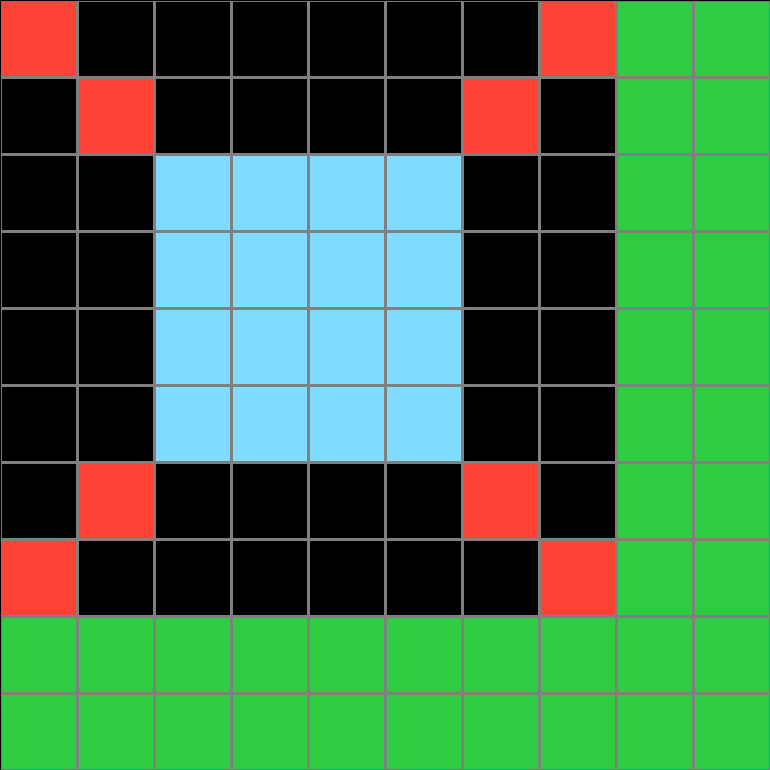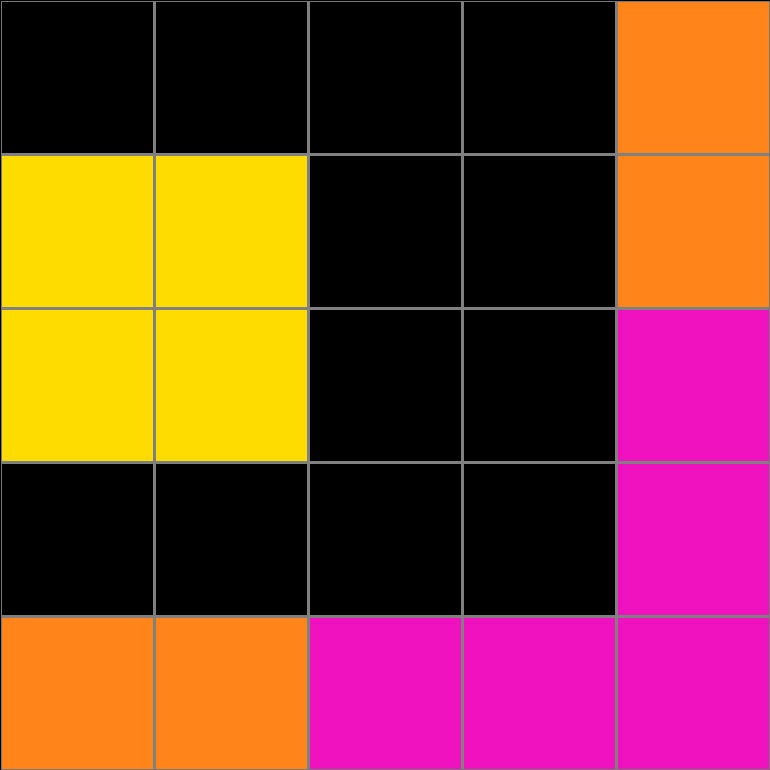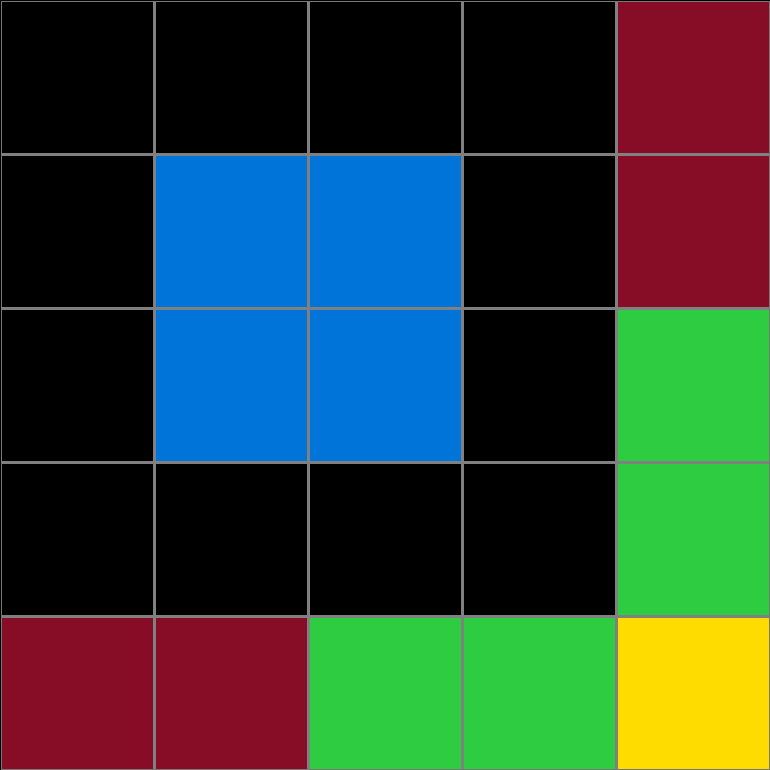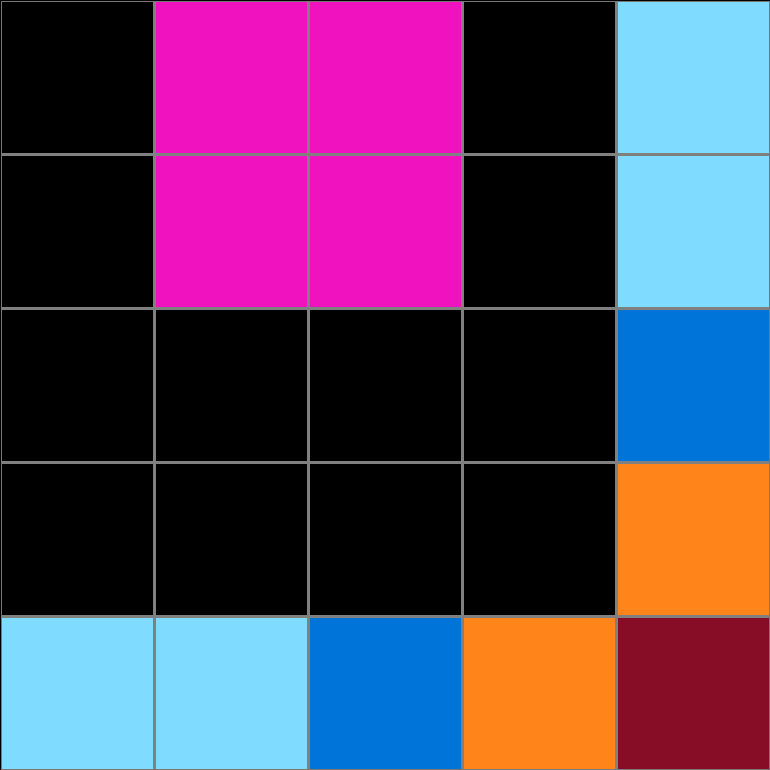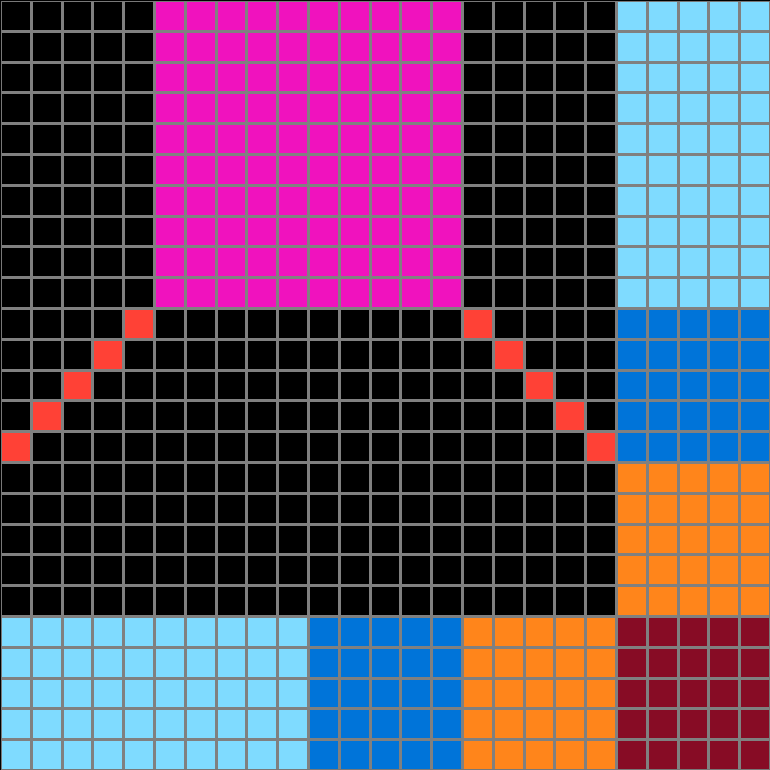Participant 1
Initial description: depending on the number of colors in the test input, the output grid must become larger if there are more colors. All colors are expanded and then a red diagonal line is made from the original solid block.
Final description: depending on the number of colors in the test input, the output grid must become larger if there are more colors. All colors are expanded and then a red diagonal line is made from the original solid block.

Participant 2
Initial description: Double, triple, or quadruple the existing number of squares. Add red squares to the corners of the main geometrical shape accordingly.
Final description: Double, triple or quadruple the existing number of squares. Add red squares in the corners of the main shape.


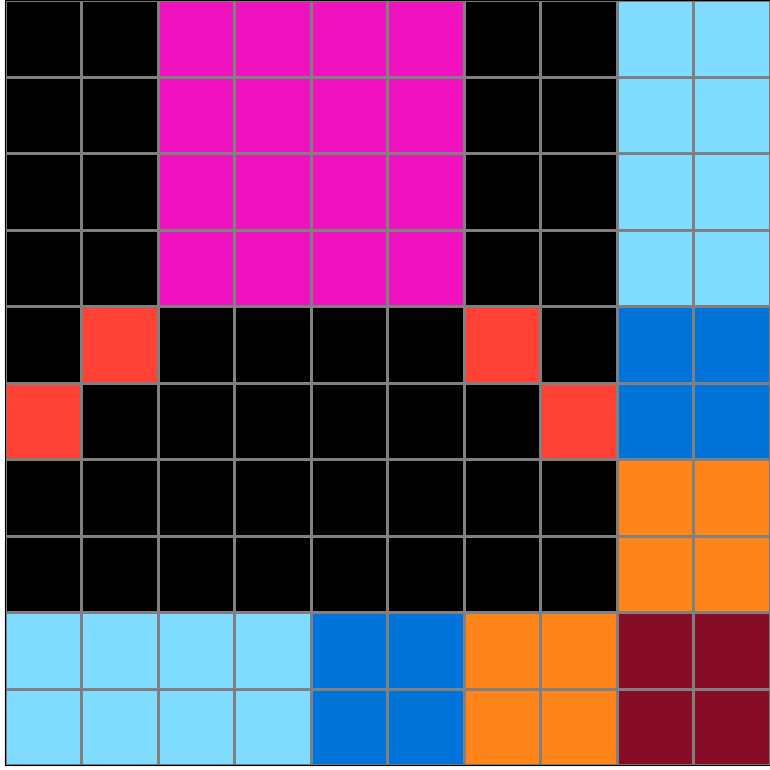
Participant 3
Initial description: Red lines extend from the pink box.
Final description: I'm not sure at all what this rule was based on.

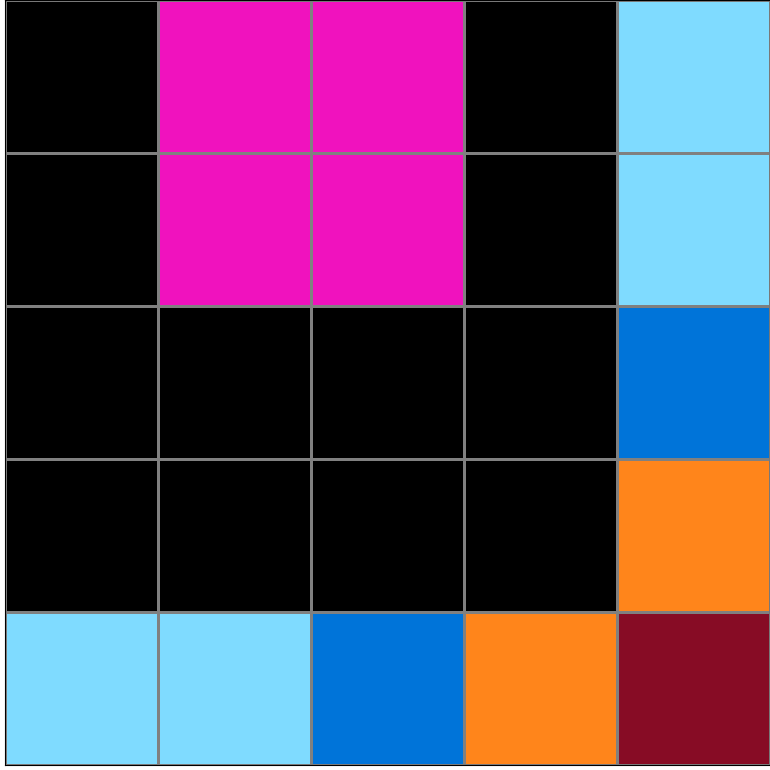
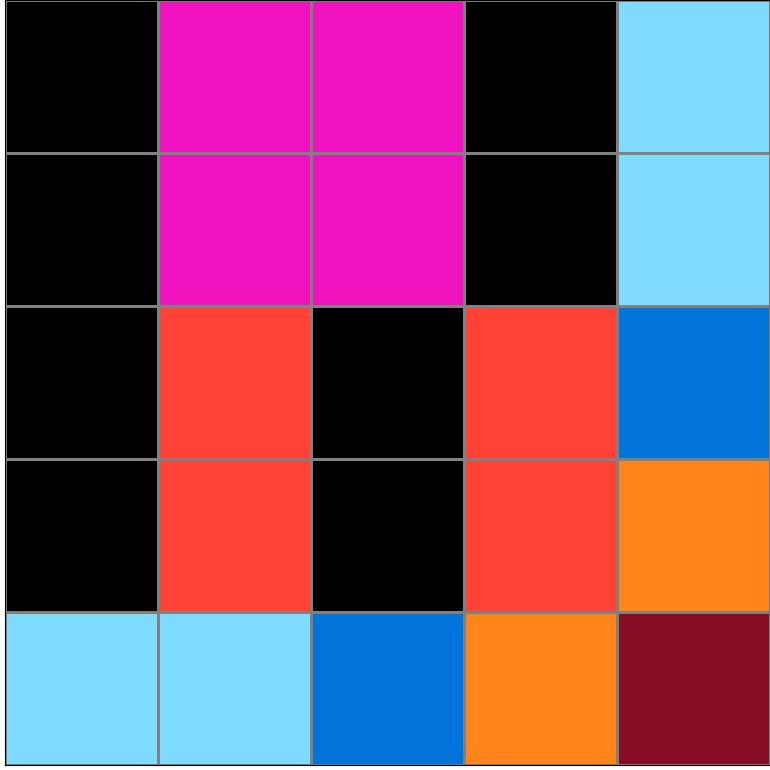
Participant 4
Initial description: Each input increased by a multiple, the first was times two, the second was times three, and the third was times four. So for the test output it would be times five. This also includes the screen size 10X10, 15x15, 20x20, and finally 25X25. There were orange red squares off the corners of the other square. You had to place it where it was placed in the test input (so either centered or touching the edge.
Final description: Each input increased by a multiple, the first was times two, the second was times three, and the third was times four. So for the test output it would be times five. This also includes the screen size 10X10, 15x15, 20x20, and finally 25X25. There were orange red squares off the corners of the other square. You had to place it where it was placed in the test input (so either centered or touching the edge.
